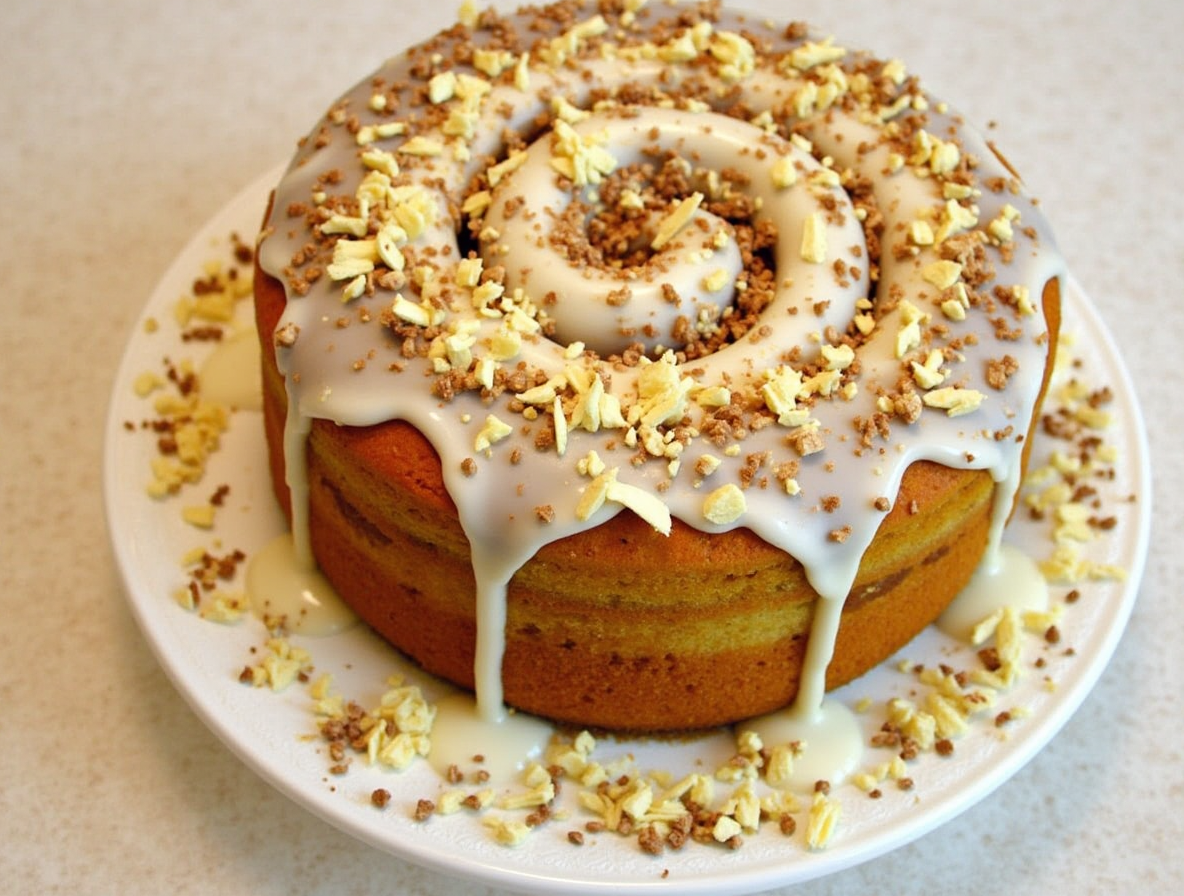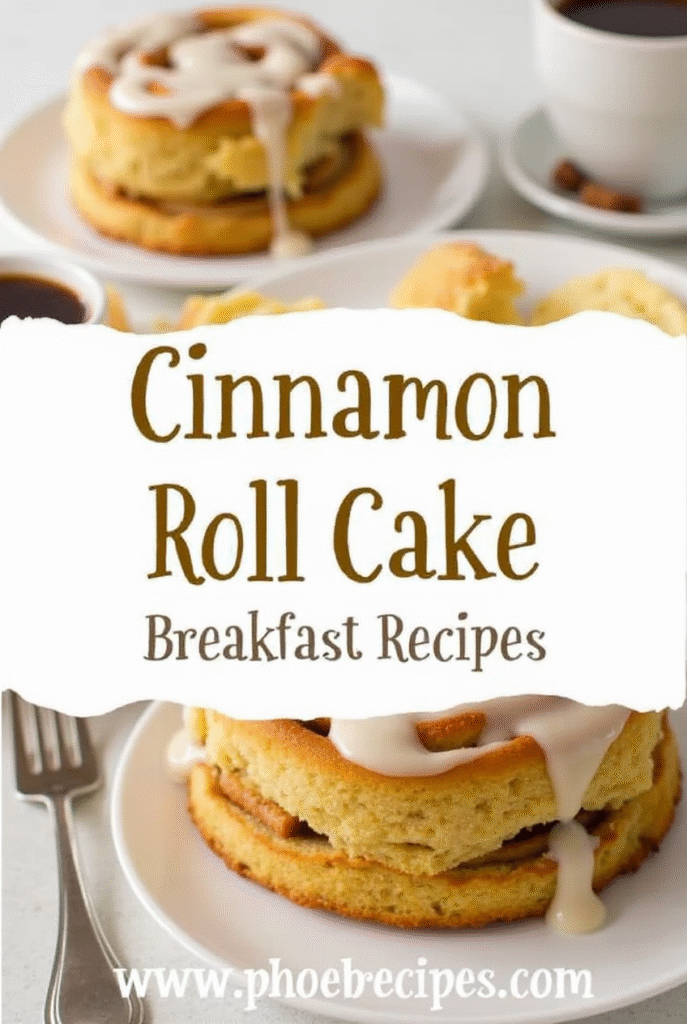The Secret to Making the Perfect Cinnamon Roll Cake (Step-by-Step Guide)
Cinnamon roll cake delivers all the warm, indulgent flavors of traditional cinnamon rolls but requires significantly less effort. We’ve created a dessert that’s truly impressive—about the size of your head when made as a giant roll—yet simple enough for beginners to master. Unlike traditional cinnamon rolls that demand multiple rises and complex rolling techniques, this cake bakes in just 35-40 minutes at 350°F.
The recipe for cinnamon roll cake is surprisingly straightforward, requiring basic ingredients like 3 cups of all-purpose flour, 1 cup of granulated sugar, and a rich cinnamon filling made with 1 cup of packed light brown sugar. Additionally, this easy cinnamon roll cake yields 12 servings at approximately 539 calories each—certainly indulgent but perfect for sharing at gatherings. If you’re short on time, you can even use boxed cake mix to create a homemade cinnamon roll cake that tastes like you spent hours in the kitchen. Best of all, the finished cake can be served warm or at room temperature and stored for up to 2 days (or frozen for 3 months), making it as practical as it is delicious.
Gathering Your Ingredients for Success
Before diving into the baking process, let’s explore the ingredients that make a cinnamon roll cake truly special. The perfect cinnamon roll cake starts with quality ingredients, properly measured and prepared.
Dry ingredients for the cake base
The foundation of any great cinnamon roll cake is the dry ingredient mix. You’ll need 3 cups of all-purpose flour as your primary ingredient. For leavening, most recipes call for 4 teaspoons of baking powder, though some variations use a combination of baking powder and baking soda.
Furthermore, don’t forget 1/4 teaspoon of salt to balance the sweetness and enhance flavors. For sweetness, you’ll need 1 cup of granulated sugar. When measuring flour, remember not to pack it into your measuring cup—instead, spoon it in and level it off. Packed flour leads to a dense, dry cake.
Wet ingredients and how to prep them
For the wet components, gather 2 large eggs at room temperature, as cold eggs can cause melted butter to seize up. Additionally, you’ll need 1 1/2 cups of milk, with whole milk providing the best moisture and tenderness.
Most recipes require 1/4 cup (4 tablespoons) of melted butter, slightly cooled. Many recipes also call for 2 teaspoons of pure vanilla extract to add depth of flavor. For extra richness, some recipes include 1 1/3 cups of sour cream, which creates an exceptionally moist texture.
Cinnamon filling essentials
The signature swirl requires 3/4 cup of softened (not melted) butter. Likewise, you’ll need 3/4 cup of packed light brown sugar—remember to firmly pack it into your measuring cup, unlike flour.
The star ingredient is, of course, cinnamon—1 tablespoon of ground cinnamon creates that classic flavor. Many recipes also add 1-2 tablespoons of all-purpose flour to the filling mixture, which helps prevent it from sinking during baking.
Simple glaze ingredients
Finally, prepare a simple glaze with 2 cups of powdered sugar (also called confectioners’ sugar). Mix in 5 tablespoons of milk and 1 teaspoon of vanilla extract.
For a richer option, make cream cheese frosting with 6 ounces of softened cream cheese, 4 tablespoons of butter, and 3 cups of powdered sugar. The frosting will seep into the warm cake’s nooks and crannies, creating that classic cinnamon roll experience.
Taking time to properly prepare these ingredients before starting will make the entire baking process smoother and result in the best homemade cinnamon roll cake possible.
Step-by-Step: Making the Cinnamon Roll Cake Batter
Now that we’ve gathered our ingredients, it’s time to create the perfect cinnamon roll cake batter. This step is crucial for achieving that signature soft, fluffy texture that makes cinnamon roll cake so irresistible.
Mixing the dry and wet ingredients
There are two primary approaches to mixing your cinnamon roll cake batter. For the traditional method, whisk together flour, baking powder, and salt in one bowl. In a separate bowl, combine sugar, eggs, vanilla, and milk until smooth. Then gradually add the wet ingredients to the dry, stirring until just combined.
Alternatively, some recipes allow for a one-bowl method where you simply combine all cake ingredients and mix well. If using a stand mixer, combine the cake mix, eggs, oil, vanilla, and sour cream, mixing on low for 30 seconds before increasing to medium speed for 2 minutes.
When adding melted butter, pour it in slowly while mixing. For buttermilk-based recipes, alternate between adding dry ingredients and buttermilk for the smoothest result.
Avoiding common batter mistakes
Overmixing is perhaps the most common error when making cinnamon roll cake batter. This develops too much gluten, resulting in a tough, rubbery cake rather than a tender one. Mix just until the ingredients are combined with no dry streaks visible.
Moreover, ingredient temperature matters significantly. Cold eggs can cause melted butter to seize, so use room temperature eggs and milk whenever possible.
Additionally, ensure your baking powder is fresh by testing it – mix a small spoonful with hot water; if it bubbles and fizzes, it’s active. For consistent results, an oven thermometer helps prevent underbaking or overbaking.
Tips for a moist and fluffy texture
For exceptional moisture, consider incorporating sour cream into your batter. Alternatively, substitute 1/4 cup of milk with sour cream to ensure the cake stays moist for up to two days.
Furthermore, using both butter and oil creates the perfect balance – butter for flavor and oil for moisture retention. When making buttermilk-based recipes, you can substitute whole milk with a splash of vinegar or lemon juice.
In fact, mixing the batter by hand rather than with an electric mixer can help prevent overmixing while still achieving a perfectly smooth consistency.
Creating the Signature Cinnamon Swirl
The signature cinnamon swirl is what transforms a regular cake into a cinnamon roll cake masterpiece. Creating this perfect marble of cinnamon goodness requires attention to detail, particularly with the filling and swirling technique.
How to make the cinnamon sugar filling
For a basic cinnamon sugar filling, combine ¼ cup white sugar with 1 tablespoon ground cinnamon in a small bowl. Subsequently, mix until well incorporated. This simple mixture can be sprinkled directly over the batter.
Alternatively, create a richer filling by mixing ¼ cup softened butter with ¼ cup brown sugar and 1 tablespoon ground cinnamon. This butter-based filling creates a more decadent swirl throughout your cake.
For those seeking mall-style cinnamon rolls with gooey filling that doesn’t leak, consider adding 1½ tablespoons of instant clear gel to your brown sugar and cinnamon mixture. Above all, remember to mix the clear gel with sugar before adding any liquids to prevent a sticky mess.
Swirling technique for the perfect marble effect
Once your filling is prepared, there are several approaches to creating that perfect swirl. First, pour half your cake batter into the prepared pan, then sprinkle an even layer of cinnamon sugar mixture over it. Following this, add the remaining batter on top.
To create the marble effect, drop spoonfuls of the cinnamon filling over the top of the cake batter. At this point, use a butter knife to make swirly patterns throughout the cake. Draw the knife through both the cinnamon and cake batter without overmixing – you want distinct swirls, not a completely blended batter.
What to do if your filling sinks
It’s not uncommon for cinnamon filling to sink to the bottom of the cake. To prevent this, consider adding 1-2 tablespoons of flour to your filling mixture to help stabilize it. As an illustration, many recipes specifically include flour in the filling to bind ingredients together.
Correspondingly, avoid using boxed cake mixes without modification, as they tend to be too soft to support heavier fillings. Nonetheless, if you must use a mix, add an extra egg to strengthen the batter.
Baking, Glazing, and Serving the Cake
With your cake batter prepared and cinnamon swirl in place, it’s time for the final stages that transform your creation into a mouthwatering treat. The baking, glazing, and serving steps are just as crucial as the preparation for achieving the perfect cinnamon roll cake.
How long to bake and how to test doneness
Place your cinnamon roll cake in a preheated oven at 350°F and bake for 30-40 minutes. Most recipes require about 35 minutes, but oven temperatures vary. To determine if your cake is fully baked, insert a wooden toothpick into the center—it should come out clean or with just a few moist crumbs.
Metal skewers aren’t ideal for testing as crumbs don’t adhere well to them. Alternatively, gently press the center with your fingertip—a properly baked cake will spring back slightly. The cake’s surface should appear uniformly golden brown and matte rather than shiny. For even more accuracy, the internal temperature should reach 205-209°F.
Making the glaze and when to pour it
Once your cake is baked, let it cool for 5-20 minutes before adding the glaze. For a simple glaze, whisk together powdered sugar, milk, and vanilla extract until smooth. For a richer option, beat butter and cream cheese together, then add powdered sugar, milk, and vanilla.
Pour the glaze over the cake while it’s still warm (not hot) so it seeps into all the nooks and crannies. If you’re using cream cheese glaze, some recipes recommend waiting until the cake is completely cool to prevent the glaze from melting excessively.
Serving tips and storage advice
The cinnamon roll cake can be served warm or at room temperature, though many find it slices better once cooled. For breakfast, pair it with breakfast sausage and fruit salad for a complete meal.
Store your cake in an airtight container at room temperature for 2-3 days[182]. Avoid refrigeration as it can dry out the cake. For cream cheese frosting versions, refrigeration is necessary for up to 4-5 days.
To freeze the cake, wrap slices in plastic wrap and place in a zip-top bag. The cake freezes well for up to 2-3 months. When ready to serve, thaw overnight in the refrigerator or unwrap and microwave for 30-60 seconds to warm through.
Conclusion
After following this step-by-step guide, you’ll find yourself with a delicious cinnamon roll cake that rivals any bakery version. This recipe certainly proves that homemade treats don’t need to be complicated to impress family and friends. The beauty of this cake lies not only in its simplicity but also in its versatility.
Unlike traditional cinnamon rolls, which demand hours of your time and advanced baking skills, this cake requires basic ingredients and straightforward techniques. We’ve walked through each crucial step – from properly measuring your ingredients to achieving that perfect cinnamon swirl without sinking.
Most importantly, this cake adapts to your schedule rather than the other way around. You can serve it warm from the oven or at room temperature depending on your preference. Leftover slices store well for several days or freeze beautifully for future cravings.
The next time you crave the comforting flavors of cinnamon rolls but lack the time for traditional baking, remember this recipe. The rich cinnamon filling, fluffy cake texture, and sweet glaze combine to create a truly satisfying dessert experience. Whether prepared for a weekend breakfast, afternoon coffee, or special celebration, this cinnamon roll cake stands as proof that sometimes the simplest recipes yield the most impressive results.
FAQs
Q1. How long does it take to bake a cinnamon roll cake? A cinnamon roll cake typically bakes in 30-40 minutes at 350°F (175°C). The exact time may vary depending on your oven, so it’s best to check for doneness around the 30-minute mark.
Q2. Can I make cinnamon roll cake ahead of time? Yes, you can make cinnamon roll cake ahead of time. It can be stored at room temperature for 2-3 days in an airtight container. For longer storage, you can freeze slices for up to 2-3 months.
Q3. What’s the secret to a moist cinnamon roll cake? The secret to a moist cinnamon roll cake lies in using ingredients like sour cream or a combination of butter and oil in the batter. Also, avoid overmixing the batter and overbaking the cake to maintain moisture.
Q4. How do I prevent the cinnamon filling from sinking to the bottom of the cake? To prevent the cinnamon filling from sinking, try adding 1-2 tablespoons of flour to your filling mixture. This helps stabilize the filling and keeps it from sinking during baking.
Q5. Can I use a boxed cake mix to make cinnamon roll cake? While it’s possible to use a boxed cake mix, it’s not ideal as the batter may be too soft to support the cinnamon filling. If you must use a mix, consider adding an extra egg to strengthen the batter and prevent sinking.


